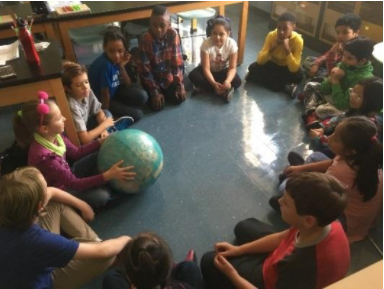By: Alison Schuettinger, Sustainability Coach and Kamila Dal

PS 31’s Green STEM Afterschool recently completed an exciting unit about wildlife in our community. Through partnerships with Java St. Community Garden and Trees New York Fruit Trees program, students planted 4 different varieties of apple trees, wildflowers, and daffodils in the community garden. While investigating plants, wildlife, and critters at the garden, we learned about pollinators, the carbon footprint of the food we eat, the importance of local green spaces, and tasted a variety of local apples!

Kamila, a PS 31 4th Grader in her second year of the Eco-Schools Green STEM Afterschool Club, said she joined the Club again this year, “because it combines my two favorite things – science and wildlife.” When asked to describe what she enjoyed most about this unit, Kamila replies, “I liked the trips to Java St. community garden the most because I never knew about it until now and I got exercise walking there!” Even though the garden is only a few blocks away from the school, it was a new local site for all of the students to visit.

To help educate the community gardeners and its visitors about the plants and wildlife that reside in the space, the Afterschool Club designed a field guide for the garden. Each student selected one of the garden’s plants or fruit trees to research and created a page for the field guide. Each page features an illustration or image of the plant, growing requirements, ecological relationships between the plant and insects or wildlife, and fun facts about the plant species.

Students also created a map of the garden, as well as a map that documents the journey from PS 31 to Java St. Community Garden. This project allowed many of the students to learn basic mapping skills for the first time. All of the students became great teachers while learning this new task, helping each other with measuring, scale, and details. It was incredible to see how students, without being reminded, would immediately support a neighboring student when they were finished with their task.

The field guide was truly a team effort and the students were so proud to create something that was useful for the garden and benefitted the community. We suppose there is only one way to go into the wild, and that is: together! This experience allowed for our students to learn through teaching, making it one of the most empowering units that they have participated in. We look forward to future lessons that will have this same impact!



